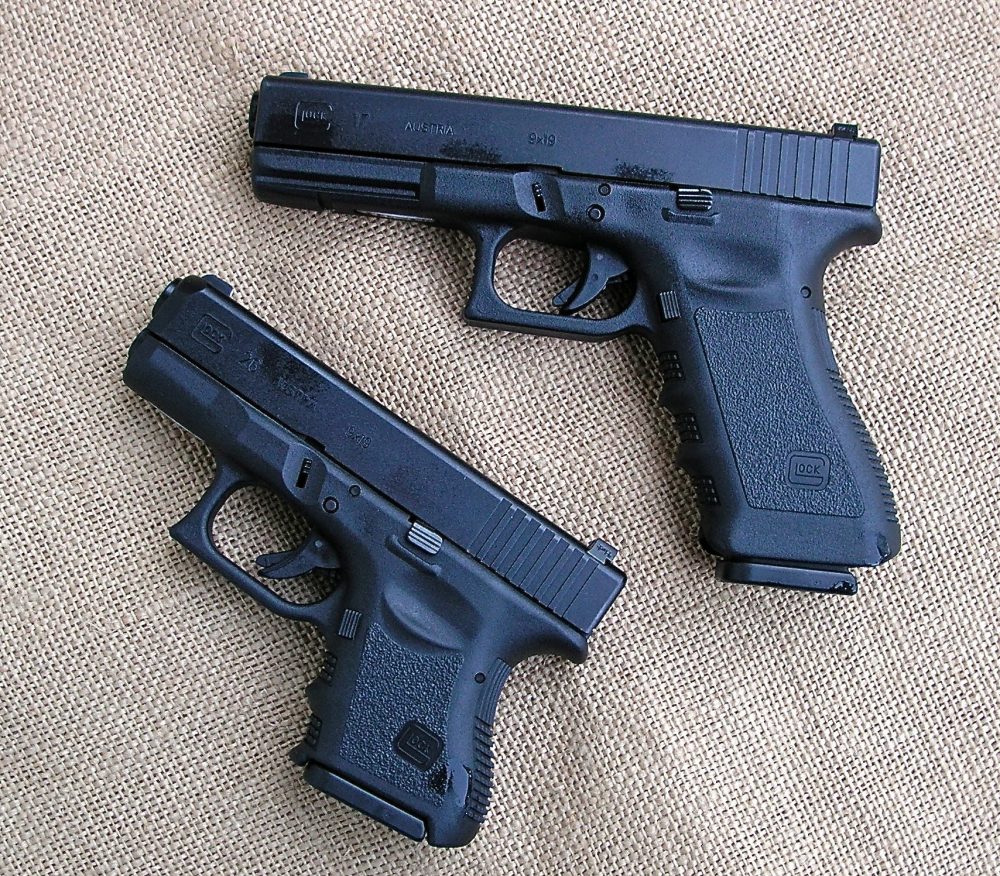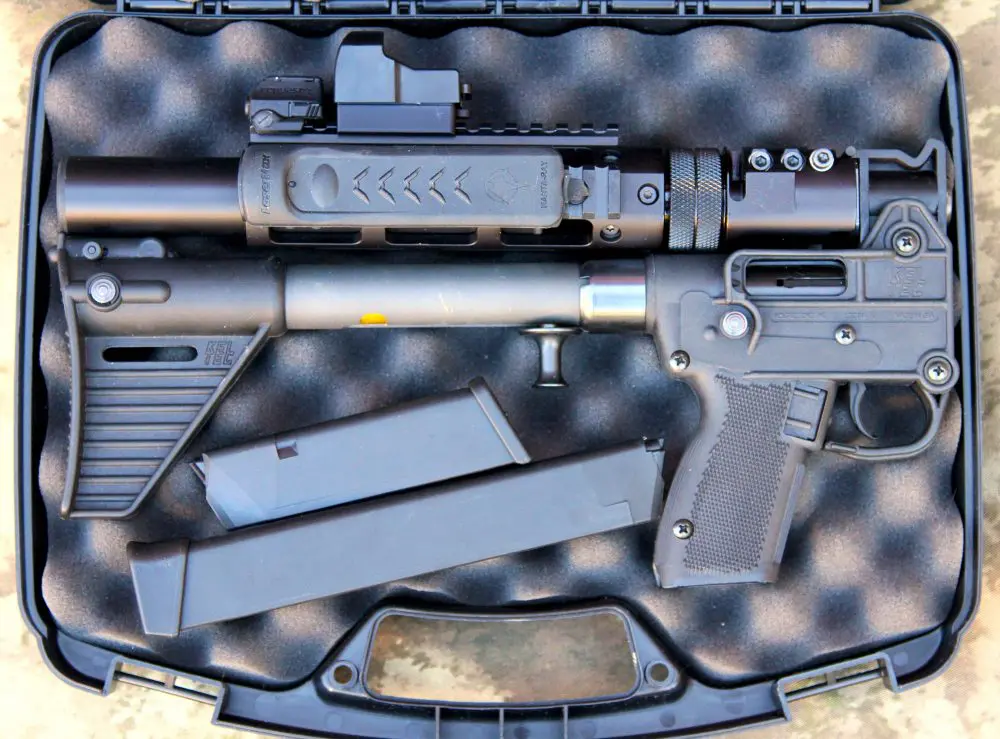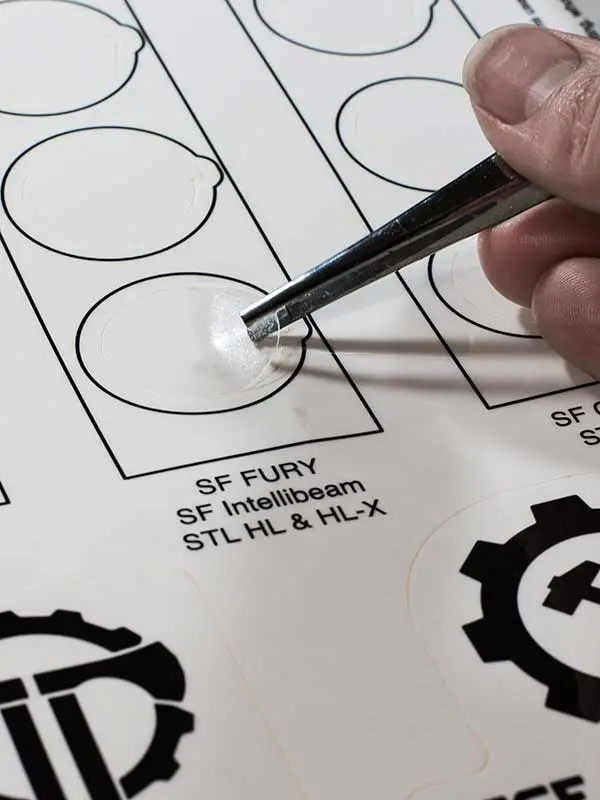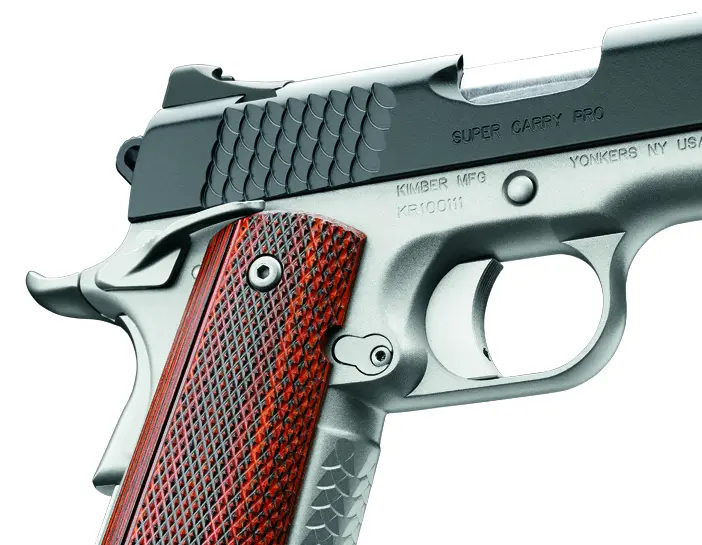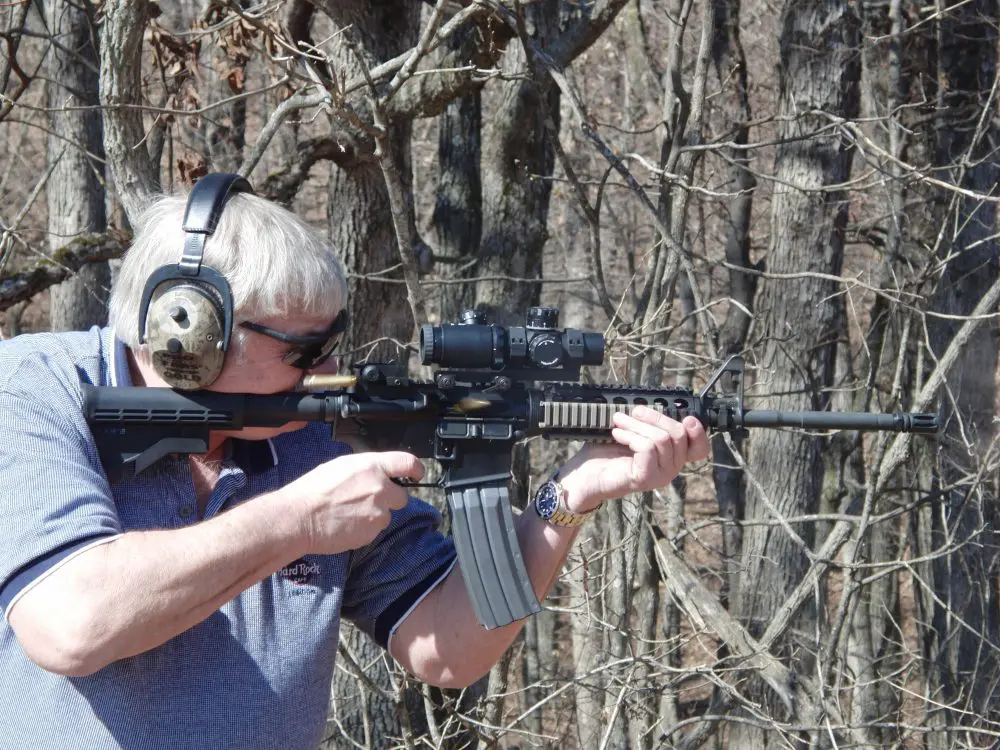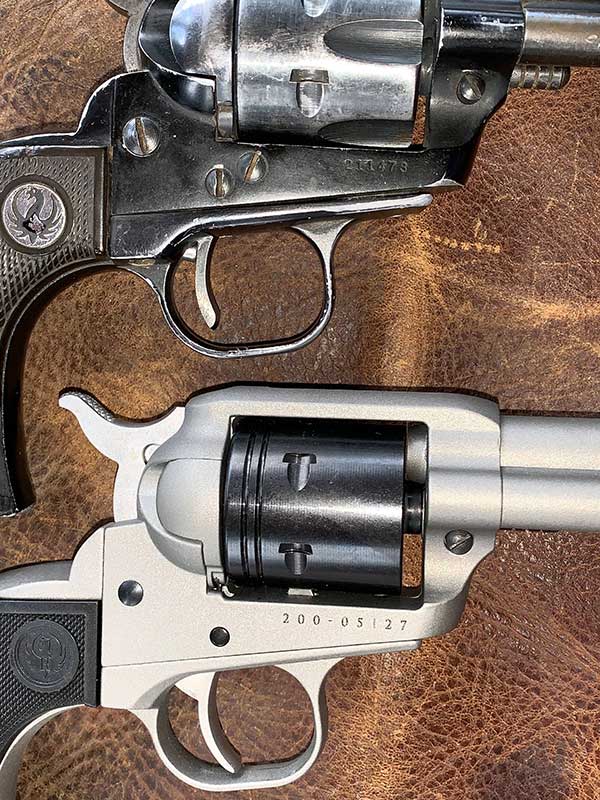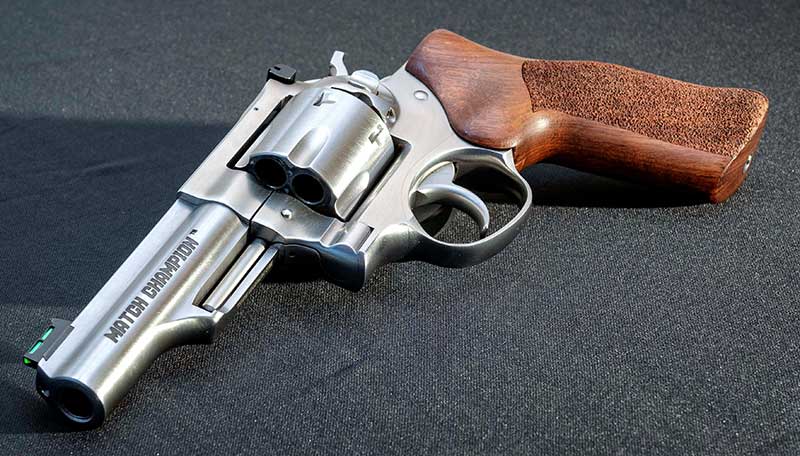
Every once in a while, someone brings a really good idea to fruition. Ruger has done exactly that with their GP100 Match Champion 10mm. Finally a medium-frame six-gun chambering six major caliber rounds!
This idea isn’t new — it was bouncing around in Bill Jordan’s head 60 years ago. He was the originator of the medium-frame .357 Magnum revolver in the 1950s: the S&W Combat Magnum. In his book No Second Place Winner, Jordan opined that the only round superior to the .357 would be a .40-caliber 200-grain SWC generating 1,200 to 1,300 feet-per-second (fps).
The result of Jordan’s (and Elmer Keith’s) efforts became the .41 Remington Magnum. It delivered the performance Jordan wanted — and a lot more. The case dimensions necessitated that S&W chamber it in their .44-sized N-Frame. Colt passed altogether on introducing it in their medium-frame Trooper/Python as the cylinder just didn’t have room for six .41 Magnums. It would’ve worked fine with a round dimensionally similar to the 10mm Auto.
Jeff Cooper helped bring the 10mm into production in the early 1980s as an upgrade to the .45 ACP he favored. He called for the same specs as Jordan, but in an autoloader: a 200-grain TMJ at 1,200 fps. The 10mm round has escaped extinction a few times and is now actually flourishing.
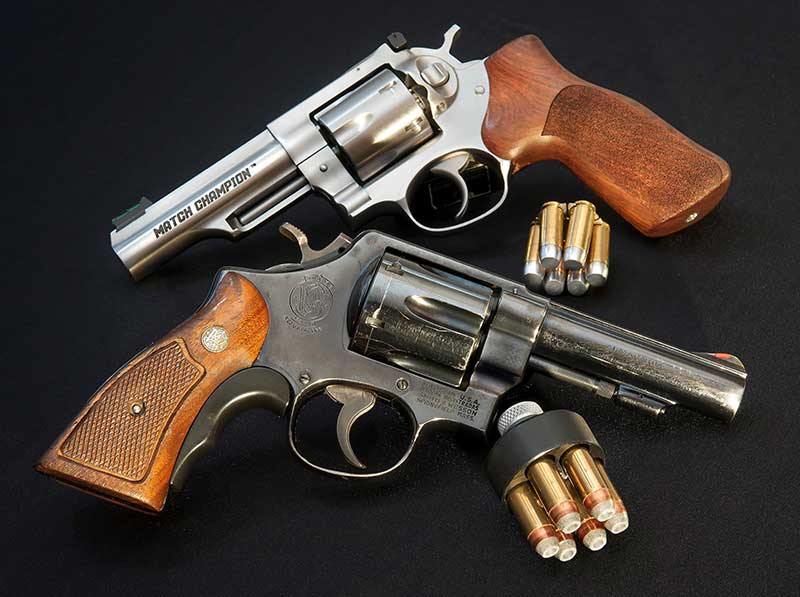
Lately it has been described as filling the gap between the .357 and .41 Magnums. That’s pretty fair, better than saying it’s a semiauto .41 Magnum—it’s not. The .41 Magnum launches 265-grain bullets to the same velocity the 10mm will redline with 165-grain projectiles. Most of us don’t need .41 Magnum power on most days. Jordan and Cooper’s favored load will handle nearly all reasonable handgun chores.
Several medium-frame revolvers exist that chamber five rounds of .40 caliber or better. Six-guns are supposed to hold six rounds, at least that’s how my muscle memory works. Until now, you’ve always had to bump up to a large-frame revolver to carry six major caliber rounds, the exception being S&W’s L-Frame 646 .40 S&W. Of limited production and discontinued in 2003, these demand collector prices that keep them out of common folk’s holsters.
A large-frame revolver seems like overkill for a 10mm. If you are carrying a gun that big anyway, it might as well be a .44 or a .45.
Table of Contents
Ruger GP100: “LARGE-MEDIUM” REVOLVER
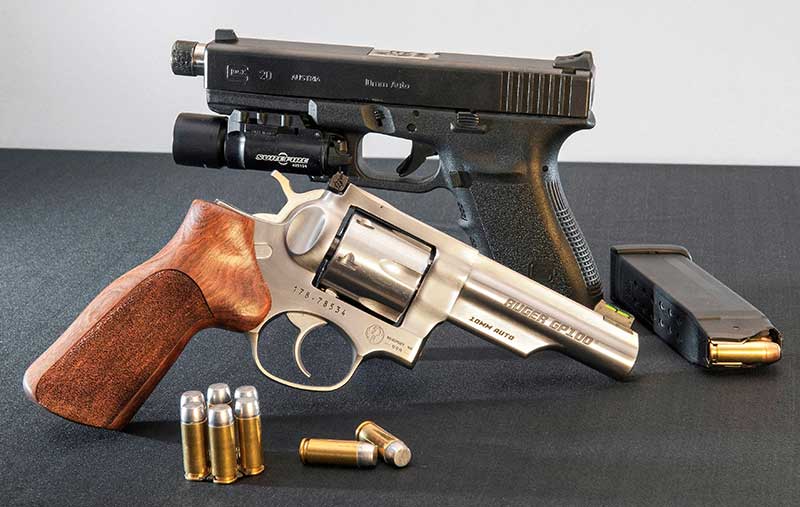
The GP100 is a “large medium” revolver, like the aforementioned Trooper or L-Frame, but a bit stouter. The .357 Magnum version weighs 40 ounces. The Match Champion is the perfect size revolver for the 10mm. Its round 4.2-inch barrel lacks the standard full-length underlug. This and the metal displaced in the bore and chambers to accommodate the larger round reduce the Champ’s weight to 37 ounces. Jordan’s Combat Magnum (four-inch S&W Model 19) weighs 36.9 ounces.
Adjustable sights are a wise choice considering the range of bullet weights available in the 10mm (60 to 230 grains). The tall front sight supplied combined with the adjustable rear sight should allow zero for all weights. The fiber-optic front sight is a bonus for most scenarios. It retains a square profile for precision and the tube is decently armored.
The Hogue wooden grips are an excellent design. Stippled on the sides for solid purchase, they provide a wide, smooth rear surface to distribute recoil at the web of the hand. The lack of finger grooves aids in fitting all hands, as does the lean circumference. They feel great.
The cylinder is lightly dehorned on the front edge to ease holstering. The chamber mouths are chamfered just enough to help cartridges find their way home. This is a largely overlooked small touch that pays huge dividends while loading the gun.
The trigger is smooth and contoured well for double-action shooting. Ruger gives the Match Champion action some tuning and it’s much smoother than any Ruger GP100 action I can recall. The folks who designed this gun know what’s important in a practical double-action revolver. I started searching for one as soon as I heard about it. After a few weeks with no luck, I had a local shop special order one.
WHAT ROUNDS WILL IT FIRE?
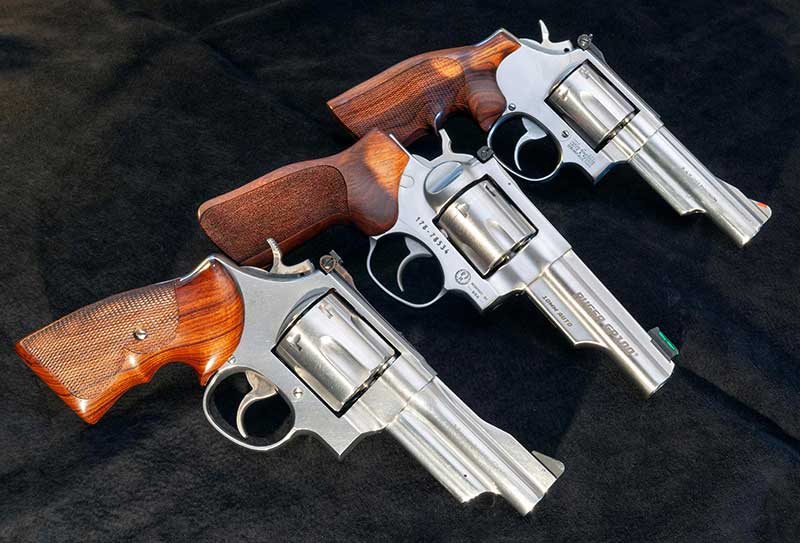
The Match Champion shipped with three full moon clips for the auto pistol round (additional clips can be had from Ruger). It will chamber and fire 10mm ammo without the moon clips as the rounds headspace off the cartridge case mouth. It won’t eject empty cases without the moon clips because the extractor star has no rim to grab on to. The clips are not as stout as .45 ACP full moons, and it’s easy to load and unload cases from them without tools.
The Ruger GP100 10mm will also chamber and fire .40 S&W rounds like a .357 Magnum will chamber and fire .38 Specials. Moon clips are mandatory when firing .40 rounds to achieve reliable ignition. The gun was designed to shoot 10mm, so shooting .40s may result in the occasional pierced primer. Chambers should be judiciously cleaned if lots of .40s are fired, to remove carbon build-up that can inhibit the longer 10mm cases from chambering.
Some have questioned if the 10mm is really an upgrade from the .357 Magnum for defensive purposes. The .357 Magnum built its fearsome reputation on a 125-grain JHP at 1,400ish fps.
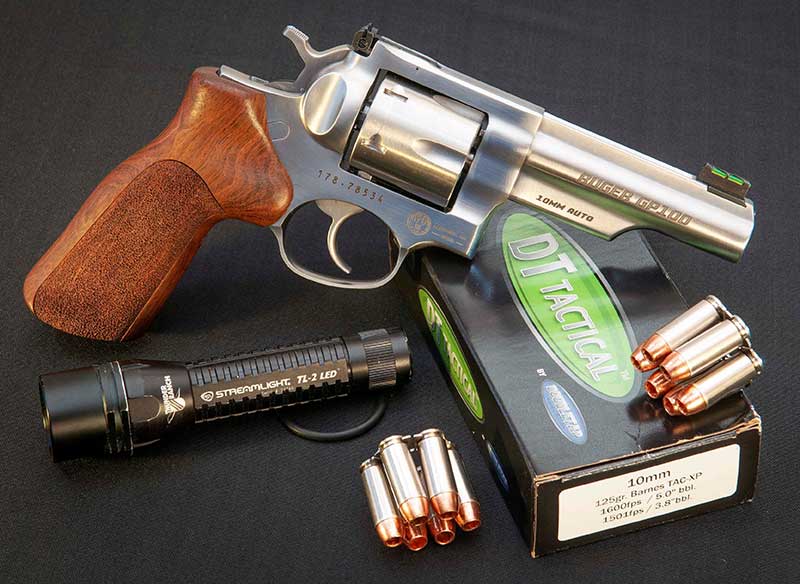
DoubleTap Ammunition loads a 10mm 125-grain Barnes TAC-XP bullet to a legitimate 1,600 fps. Doubletap’s owner Mike McNett describes the round thusly: “This is probably the best personal defense load in existence.” To each his own, but it’s hard to argue against the 10mm.
Most factory ammo won’t achieve the 10mm’s original claimed ballistics. The first batch of Norma ammunition available likely did, but manufacturers have sedated 10mm ammo since then. DoubleTap and Buffalo Bore are exceptions to this, and have no doubt contributed to the resurgence of the cartridge.
Chasing that 1,200 fps benchmark with jacketed 200-grain bullets and current reloading manuals is tricky. It’s easier to get there with the reduced friction of cast bullets.
A visit to Montana Bullet Works’ website provided the bullet to make Jordan happy: a 200-grain LBT plain base wide flat nose with an obscenely wide meplat, cast hard to 22 BHN. Almost a wadcutter, its ogive is still rounded enough to sneak into chamfered chambers efficiently.
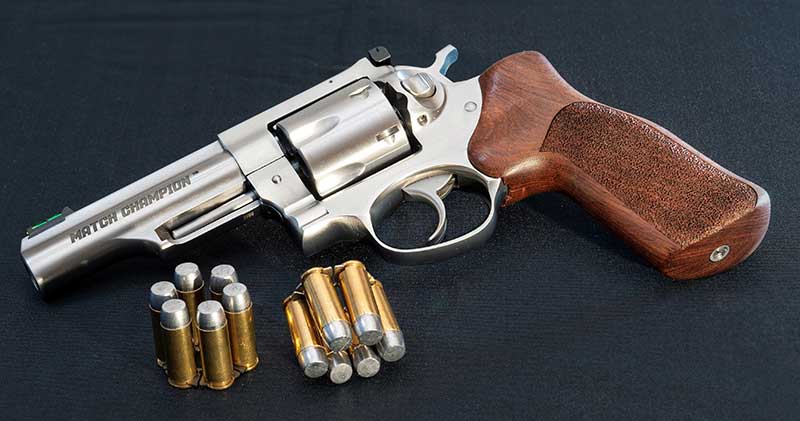
Upon ordering, Victoria from MBW emailed to advise that this bullet could cause feeding issues in some semi-autos. She recommended a similar bullet that would feed better. I responded it was for a revolver, and thanked her for the heads up.
Revolvers still have the edge over semi-autos when it comes to functioning with ridiculous bullet shapes. MBW gets high marks for customer service in addition to producing custom cast bullets of the finest quality. Loaded in virgin Starline cases on 8.2 grains of Hodgdon Longshot and capped with a Federal Match LP primer, it would hopefully achieve 1,200 fps in the Ruger.
TESTING THE RUGER GP100
A few more bullets were loaded in once-fired Winchester cases already prepped with WLP primers and 8.0 grains of Alliant Power Pistol. Several factory loads and the two handloads were fired across the screens of a pro-chrony chronograph with the temperature topping 90 degrees.
The Ruger earned its name and shot like a champ. Recoil was pleasant except for the Silvertip and the two handloads, which were stout but manageable. With jacketed bullets, it shot the CorBon 165-grain JHP most accurately. The MBW bullet/Long Shot load was extremely consistent and put rounds into a tidy little pile with one flyer, shooting offhand at 20 yards. The Power Pistol load wasn’t quite as consistent but averaged exactly 1,200 fps. Mission accomplished: heavyweight medicine from a middleweight gun.
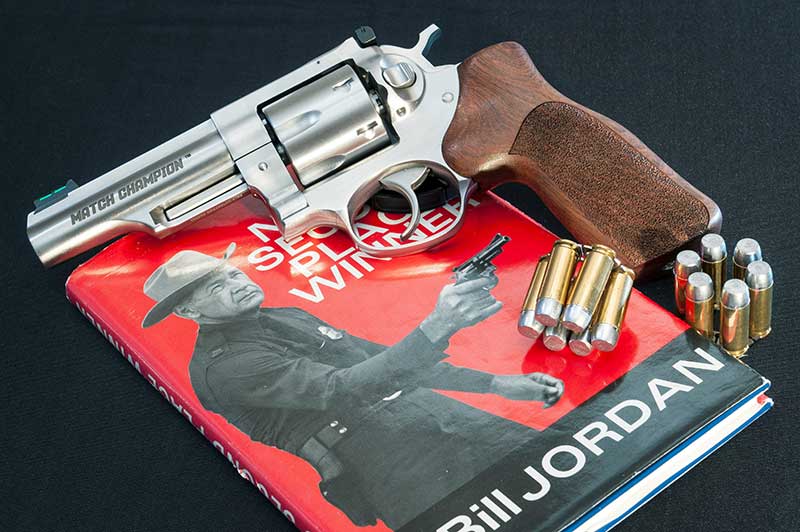
The moon clips were a little ornery to fully seat at first but got better with use. Polishing the sharp edge of the center hole on the clip would probably cure this. A 10mm “Auto Rim” cartridge would allow this gun to behave like a “normal” revolver.
Hopefully Starline will bless us with such. Five Star could tool up and make speed loaders for it if they do.
The Match Champion may have been built with competitors in mind, but its features and chambering make it shine as a defensive sidearm or dark woods gun. Ruger has taken a great concept and executed it very well. Bill Jordan would be proud.
SOURCE
STURM, RUGER & CO, INC.
(203) 259-7843
www.ruger.com
AMMUNITION PERFORMANCE
| LOAD | VELOCITY (fps, six-round average) |
| CCI 200-gr. Blazer TMJ | 952 |
| CorBon 135-gr. JHP | 1,362 |
| CorBon 155-gr. DPX | 1,176 |
| CorBon 165-gr. JHP | 1,245 |
| Federal 190-gr. JHP | 990 |
| MBW 200-gr. WFN (Long Shot) | 1,176 |
| MBW 200-gr. WFN (Power Pistol) | 1,200 |
| PMC 200-gr. TCFMJ | 1,010 |
| Remington 180-gr. FMJ | 1,096 |
| Winchester 175-gr. STHP | 1,240 |

